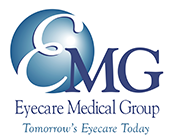
January is Glaucoma Awareness Month. In the United States, glaucoma is the number one cause of permanent blindness. Chances are, you may have a friend or relative who suffers from or who is at risk for glaucoma.
Unlike other age-related conditions, like cataracts, vision loss from glaucoma is irreversible. The early symptoms of glaucoma are often so subtle that patients don’t even notice them until it’s too late.
This is why being aware of glaucoma and getting eye exams is vital, especially if you’re at high risk. Keep reading to learn more about glaucoma!
What is Glaucoma?
Glaucoma is actually the name for a collection of diseases that cause damage to the optic nerve. The optic nerve is what translates information received by the retina.
The retina is the thin, light-sensitive lining on the back of your eye. The optic nerve takes this information from the retina and translates it into images that your brain processes.
When your IOP, or intraocular pressure, is too high, it causes damage to the optic nerve. There are some cases of glaucoma that are caused by other factors when the fluid pressure in your eye is normal. For the most part, high IOP is the primary cause of glaucoma.
When the optic nerve suffers damage, it causes vision loss, usually starting with your periphery vision and then closing in. This vision loss is irreparable, but it can be slowed or even stopped with proper treatment.
Glaucoma Risk Factors
There are a few factors that put you at higher risk for glaucoma:
- Being over 60
- Being African American, Hispanic, or Asian
- Having diabetes
- Being very nearsighted
These risk factors, for the most part, are not something you can control. The best way to prevent glaucoma is to have regular eye exams.
This gives your eye doctor a baseline to compare your eyes to if they start changing. It also makes it easier to diagnose glaucoma in the early stages or before optic nerve damage has occurred. This is possible by measuring your IOP levels.
Diagnosis
To be diagnosed with glaucoma, you need to see an eye care professional. Because glaucoma displays no symptoms before vision loss, it’s important to have your eyes examined regularly if you’re at high risk.
Individuals above the age of 60 should be examined annually. If you also have another risk factor, you may want to consider annual examinations at an earlier age. Your eye care provider can tell you how often you should have eye exams.
By measuring your IOP, your doctor can assess your risk and recommend steps to slow the progress of glaucoma. Having your eye pressure measured is a quick and simple process, so there’s no reason not to have it done regularly. Regular exams can save your vision!
Managing Glaucoma
There is no cure for glaucoma, but there are ways to manage it, especially in the early stages. Management usually involves lowering your IOP.
This treatment can take the form of medicated eye drops, surgery, or a combination of both. What kind of treatment is best for you varies and can be a matter of preference.
Some people are fine with taking eye drops every day. Some may need more intensive treatment to keep their IOP low.
Your eye care professional can help you navigate your options. But before you receive treatment, you need to know you have glaucoma.
Be sure to have regular examinations! The earlier you can get diagnosed, the more effective treatment will be.
Have more questions or concerns about glaucoma? Schedule an appointment at Eyecare Medical Group in Portland, ME!





